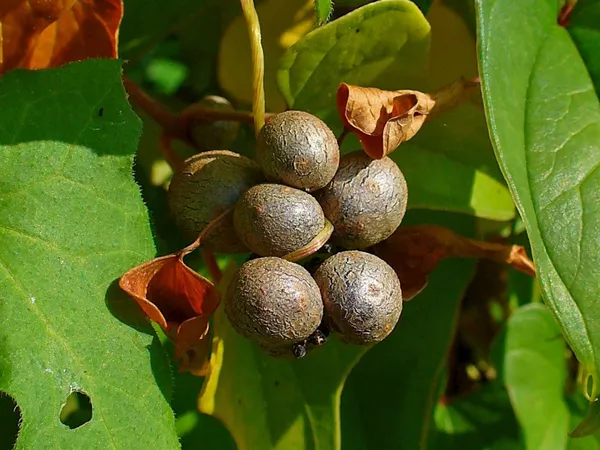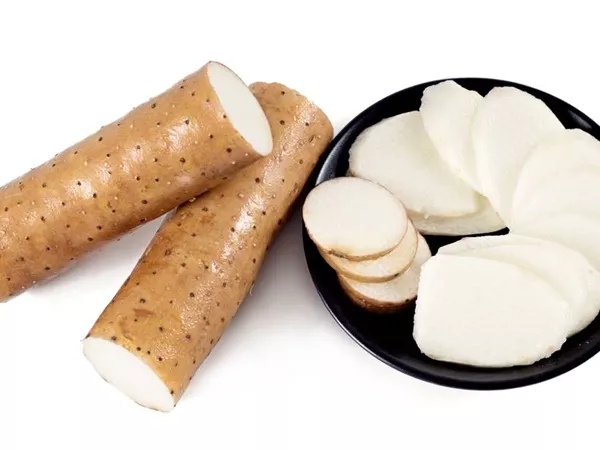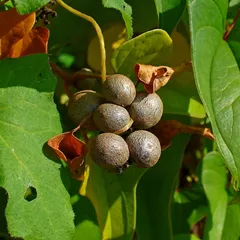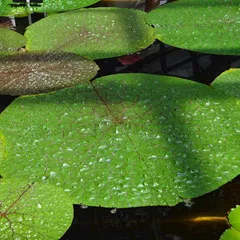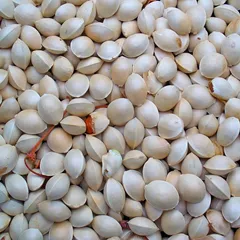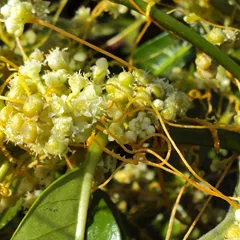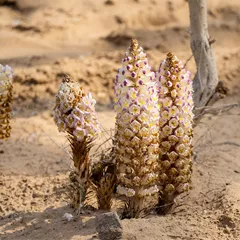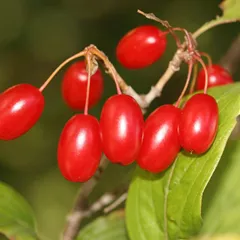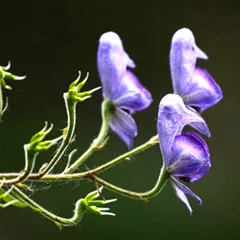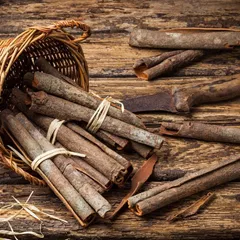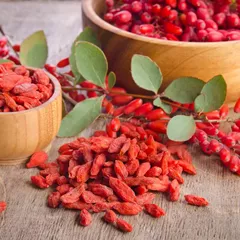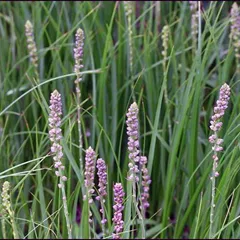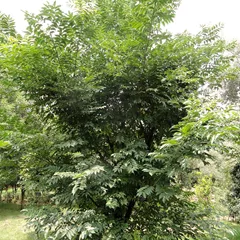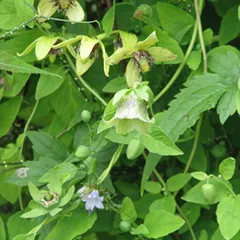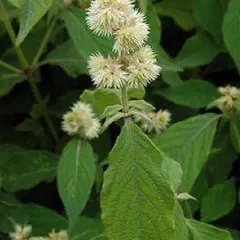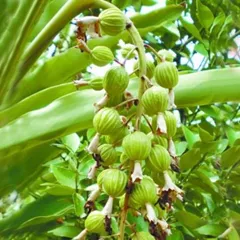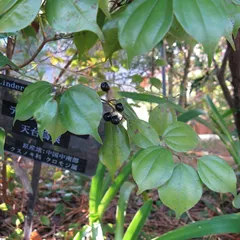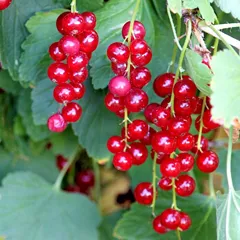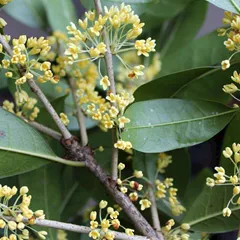Shan Yao
Shan Yao
English: Yam
Chinese: 山药
Use of Shan Yao (yam) in TCM
Please note that you should never self-prescribe TCM ingredients. A TCM ingredient is almost never eaten on its own but as part of a formula containing several ingredients that act together. Please consult a professional TCM practitioner, they will be best able to guide you.
Preparation: Remove impurities, wash, cut and dry.
Dosage: 3-6g.
Main actions according to TCM*: Tonifies the Spleen and Stomach. Tonifies the Lung Qi and nourishes the Lung Yin. Nourishes the Kidneys and consolidates Jing.
Primary conditions or symptoms for which Shan Yao may be prescribed by TCM doctors*: Vaginal discharge Diarrhea Spermatorrhea Urinary incontinence Uterine prolapse Whooping cough
Contraindications*: This herb should be used with caution when there is Excess Heat or Dampness, especially Dampness in the abdomen.
Common TCM formulas in which Shan Yao is used*
Wan Dai Tang
Source date: 1826 AD
Number of ingredients: 10 herbs
Formula key actions: Tonifies the Middle Burner. Removes Dampness. Stops vaginal discharge. Strengthens the Spleen.
Conditions targeted*: PreeclampsiaOtitis media and others
Shan Yao is a king ingredient in Wan Dai Tang. Like the name indicates, it means it has more power than other ingredients in the formula.
In Wan Dai Tang, Shan Yao strengthens the Spleen, tonifies Qi, removes Dampness, and builds up the Essence. It works collaboratively with Bai Zhu to support the Girdle Vessel in securing the Channels.
Yi Huang Tang
Source date: 1826 AD
Number of ingredients: 5 herbs
Formula key actions: Strengthens the Spleen. Dries Dampness. Clears Heat. Stops vaginal discharge.
Conditions targeted*: CervicitisCervical erosion and others
Shan Yao is a king ingredient in Yi Huang Tang. Like the name indicates, it means it has more power than other ingredients in the formula.
In Yi Huang Tang, Shan Yao strengthens the Spleen and stabilizes the Penetrating Vessel and the Essence. It also works together with Qian Shi (Foxnut seeds) to tonify the Directing Vessel Deficiency. The 2 herbs are also able to support Body Fluids metabolism.
Tu Si Zi Wan
Source date: 1253 AD
Number of ingredients: 11 herbs
Formula key actions: Warms the Kidneys. Prevents abnormal leakage such as urinary incontinence or seminal emissions.
Conditions targeted*: Urinary incontinenceSeminal emission and others
Shan Yao is a king ingredient in Tu Si Zi Wan. Like the name indicates, it means it has more power than other ingredients in the formula.
In Tu Si Zi Wan, Shan Yao , together with other key herbs of the formula, tonifies the Kidneys.
Liu Wei Di Huang Wan
Source date: 1119 AD
Number of ingredients: 6 herbs
Formula key actions: Enriches the yin and nourishes the Kidneys.
Conditions targeted*: Chronic nephritisProstate diseases and others
Shan Yao is a deputy ingredient in Liu Wei Di Huang Wan. This means it helps the king ingredient(s) treat the main pattern or it serves to treat a coexisting pattern.
In Liu Wei Di Huang Wan, Shan Yao stabilizes the Essence by tonifying the Spleen, which is the source of post-heaven Essences Indeed, to reinforce Essence and improve its function, the Spleen (the source of postnatal Essence) must function properly.
Ba Wei Di Huang Wan
Source date: 220 AD
Number of ingredients: 8 herbs
Formula key actions: Tonifies Yang. Warms the Kidneys and lower extremities.
Conditions targeted*: Diabetes mellitusDiabetes insipidus and others
Shan Yao is a deputy ingredient in Ba Wei Di Huang Wan. This means it helps the king ingredient(s) treat the main pattern or it serves to treat a coexisting pattern.
In Ba Wei Di Huang Wan, Shan Yao stabilizes the Essence by tonifying the Spleen, which is the source of post-heaven Essences Indeed, to reinforce Essence and improve its function, the Spleen (the source of postnatal Essence) must function properly.
You Gui Wan
Source date: 1624 AD
Number of ingredients: 10 herbs
Formula key actions: Warms and tonifies Kidney Yang. Replenishes the Essence. Tonifies the Blood.
Conditions targeted*: Nephrotic syndromeOsteoporosis and others
Shan Yao is a deputy ingredient in You Gui Wan. This means it helps the king ingredient(s) treat the main pattern or it serves to treat a coexisting pattern.
Qi Ju Di Huang Wan
Source date: 1350 AD
Number of ingredients: 8 herbs
Formula key actions: Nourishes Kidney and Liver Yin. Improves vision.
Conditions targeted*: Diabetes mellitusDiabetes insipidus and others
Shan Yao is a deputy ingredient in Qi Ju Di Huang Wan. This means it helps the king ingredient(s) treat the main pattern or it serves to treat a coexisting pattern.
In Qi Ju Di Huang Wan, Shan Yao stabilizes the Essence by tonifying the Spleen, which is the source of post-heaven Essences Indeed, to reinforce Essence and improve its function, the Spleen (the source of postnatal Essence) must function properly.
Zuo Gui Wan
Source date: 1624 AD
Number of ingredients: 8 herbs
Formula key actions: Nourishes the Yin. Strengthens the Kidneys. Fills the Essence. Augments the marrow.
Conditions targeted*: Chronic bronchitisChronic nephritis and others
Shan Yao is a deputy ingredient in Zuo Gui Wan. This means it helps the king ingredient(s) treat the main pattern or it serves to treat a coexisting pattern.
In Zuo Gui Wan, Shan Yao benefits the Yin and tonifies the Spleen which is the origin of the postnatal Qi and Blood.
Zuo Gui Yin
Source date: 1624 AD
Number of ingredients: 6 herbs
Formula key actions: Nourishes the Yin. Tonifies the Kidneys.
Shan Yao is a deputy ingredient in Zuo Gui Yin. This means it helps the king ingredient(s) treat the main pattern or it serves to treat a coexisting pattern.
In Zuo Gui Yin, Shan Yao benefits the Yin and tonifies the Spleen which is the origin of the postnatal Qi and Blood.
Zhi Bo Di Huang Wan
Shan Yao is a deputy ingredient in Zhi Bo Di Huang Wan. This means it helps the king ingredient(s) treat the main pattern or it serves to treat a coexisting pattern.
In Zhi Bo Di Huang Wan, Shan Yao stabilizes the Essence by tonifying the Spleen. Indeed, to reinforce Essence and improve its function, the Spleen (the source of postnatal Essence) must function properly.
Ba Xian Chang Shou Wan
Source date: 1615 AD
Number of ingredients: 8 herbs
Formula key actions: Treats Yin Deficiency of the Lungs and Kidneys.
Shan Yao is a deputy ingredient in Ba Xian Chang Shou Wan. This means it helps the king ingredient(s) treat the main pattern or it serves to treat a coexisting pattern.
In Ba Xian Chang Shou Wan, Shan Yao stabilizes the Essence by tonifying the Spleen, which is the source of post-heaven Essences Indeed, to reinforce Essence and improve its function, the Spleen (the source of postnatal Essence) must function properly.
Shen Ling Bai Zhu San
Source date: 1107 AD
Number of ingredients: 10 herbs
Formula key actions: Augments the Qi. Strengthens the Spleen. Leaches out Dampness. Stops diarrhea.
Conditions targeted*: Chronic gastritisEnteritis and others
Shan Yao is a deputy ingredient in Shen Ling Bai Zhu San. This means it helps the king ingredient(s) treat the main pattern or it serves to treat a coexisting pattern.
In Shen Ling Bai Zhu San, Shan Yao tonifies the Spleen and supports the key herbs.
An Tai Zhu Gao
Source date: 1879 AD
Number of ingredients: 14 herbs
Formula key actions: Strengthens the Qi and Blood. Tonifies the Liver and Kidneys. Calms the fetus.
Conditions targeted*: Restless fetus and others
Shan Yao is a deputy ingredient in An Tai Zhu Gao. This means it helps the king ingredient(s) treat the main pattern or it serves to treat a coexisting pattern.
In An Tai Zhu Gao, Shan Yao tonifies the Qi of Lungs, Spleen and Stomach.
Ji Sheng Shen Qi Wan
Source date: 1695 AD
Number of ingredients: 10 herbs
Formula key actions: Tonifies and warms Kidney Yang.
Conditions targeted*: EdemaHeavy back and others
Shan Yao is a deputy ingredient in Ji Sheng Shen Qi Wan. This means it helps the king ingredient(s) treat the main pattern or it serves to treat a coexisting pattern.
In Ji Sheng Shen Qi Wan, Shan Yao is sweet and bland. It stabilizes the Essence by tonifying the Spleen. To reinforce the Essence and improve its function, the Spleen which is the source of postnatal Essence, must function properly. It is effective in treating Deficiency and various consumptive patterns.
Ming Mu Di Huang Wan
Source date: 1642 AD
Number of ingredients: 12 herbs
Formula key actions: Nourishes the Liver. Enriches the Kidneys. Improves the vision.
Shan Yao is a deputy ingredient in Ming Mu Di Huang Wan. This means it helps the king ingredient(s) treat the main pattern or it serves to treat a coexisting pattern.
In Ming Mu Di Huang Wan, Shan Yao stabilizes the Essence by tonifying the Spleen, which is the source of post-heaven Essences Indeed, to reinforce Essence and improve its function, the Spleen (the source of postnatal Essence) must function properly.
Suo Quan Wan
Source date: 1227 AD
Number of ingredients: 3 herbs
Formula key actions: Warms the Kidneys. Dispels cold. Reduces urinary frequency. Stops leakage.
Conditions targeted*: Urinary incontinencePostpartum incontinence and others
Shan Yao is an assistant ingredient in Suo Quan Wan. This means that it either serves to reinforces the effect of other ingredients or it moderates their toxicity.
In Suo Quan Wan, Shan Yao strengthens the Spleen, tonifies the Kidneys, and binds up the Essence.
Wen Qi Hua Shi Tang
Source date: 1827 AD
Number of ingredients: 7 herbs
Formula key actions: Supports Kidney Yang. Supplies Spleen Qi. Expels Cold and Dampness from the Uterus.
In Wen Qi Hua Shi Tang, Shan Yao protects the Penetrating Vessel (Chong Mai)
Tiao Gan Tang
Source date: 1827 AD
Number of ingredients: 7 herbs
Formula key actions: Nourishes Kidney and Liver Yin.
Gui Shao Di Huang Tang
Source date: 1706 AD
Number of ingredients: 8 herbs
Formula key actions: Nourishes Blood. Nourishes Yin.
In Gui Shao Di Huang Tang, Shan Yao nourishes Liver and Kidney Yin
Da Bu Yuan Jian
Source date: 1624 AD
Number of ingredients: 8 herbs
Formula key actions: Tonifies Yin and Blood. Nourishes Qi and Yang.
Conditions targeted*: Uterine prolapse and others
In Da Bu Yuan Jian, Shan Yao benefits the Yin and tonifies the Spleen which is the source of the postnatal constitution.
Shen Qi Wan
Source date: 220 AD
Number of ingredients: 8 herbs
Formula key actions: Tonifies and warms Kidney Yang.
Conditions targeted*: Diabetes mellitusHyperaldosteronism and others
In Shen Qi Wan, Shan Yao is Sweet and bland. It stabilizes the Essence by tonifying the Spleen. To reinforce the Essence and improve its function, the Spleen which is the source of postnatal Essence, must function properly. It is effective in treating Deficiency and various consumptive patterns.
Ren Shen Zi Xie Tang
In Ren Shen Zi Xie Tang, Shan Yao tonifies Qi in order to nourish Blood
Dang Gui Di Huang Yin
Source date: 1640 AD
Number of ingredients: 7 herbs
Formula key actions: Nourishes Blood. Tonifies Kidney and Liver Yin. Regulates the menstrual cycle.
In Dang Gui Di Huang Yin, Shan Yao stabilizes the Essence by tonifying the Spleen. Indeed, to reinforce Essence and improve its function, the Spleen (the source of postnatal Essence) must function properly.
Key TCM concepts behind Shan Yao's properties
In Traditional Chinese Medicine (TCM), Shan Yao belongs to the 'Tonic herbs for Qi Deficiency' category. Tonic herbs are used for patterns of Deficiency, when one lacks one of the 'Four Treasures' (Qi, Blood, Yin and Yang). Qi tonics are typically sweet and they tend to enter the Spleen and Lungs because these Organs are most involved with the production of Qi.
Furthermore Shan Yao is Neutral in nature. This means that Shan Yao typically doesn't affect the balance in your body. Balance between Yin and Yang is a key health concept in TCM. Eating too many "Hot" (Yang) ingredients can lead to an imbalance whereby one has a Yang Excess. The inverse is true as well: too many "Cold" (Yin) ingredients can lead to a Yin Excess. The Neutral nature of Shan Yao means that you don't have to worry about that!
Shan Yao also tastes Sweet. The so-called 'Five Phases' theory in Chinese Medicine states that the taste of TCM ingredients is a key determinant of their action in the body. Sweet ingredients like Shan Yao tends to slow down acute reactions and detoxify the body. They also have a tonic effect because they replenish Qi and Blood.
The tastes of ingredients in TCM also determine what Organs and Meridians they target. As such Shan Yao is thought to target the Kidney, the Lung and the Spleen. According to TCM, the Kidneys do not only regulate the urinary system but also play a key role in the reproductive system and the growth and aging process of the body. In addition to performing respiration, the Lungs are thought in TCM to be a key part of the production chain for Qi and the Body Fluids that nourish the body. The Spleen assists with digestion, Blood coagulation and Fluids metabolism in the body.
Research on Shan Yao
A mixture consisting of Rhizoma Dioscoreae has a good nutritional and health promoting effect on pregnancy.1
Sources:
1. Ling CD, Zhang ZJ, Chen ZL. (1996). Studies on nutritional effects of traditional Chinese tonics with strengthened nutrients on pregnant women and rats. Zhongguo Zhong Xi Yi Jie He Za Zhi. , 16(5):270-3.
Use of Shan Yao as food
Shan Yao is also eaten as food. It is used as an ingredient in dishes such as Stir-fried Chinese Yam or Sautéed Yam with Soy Sauce.

